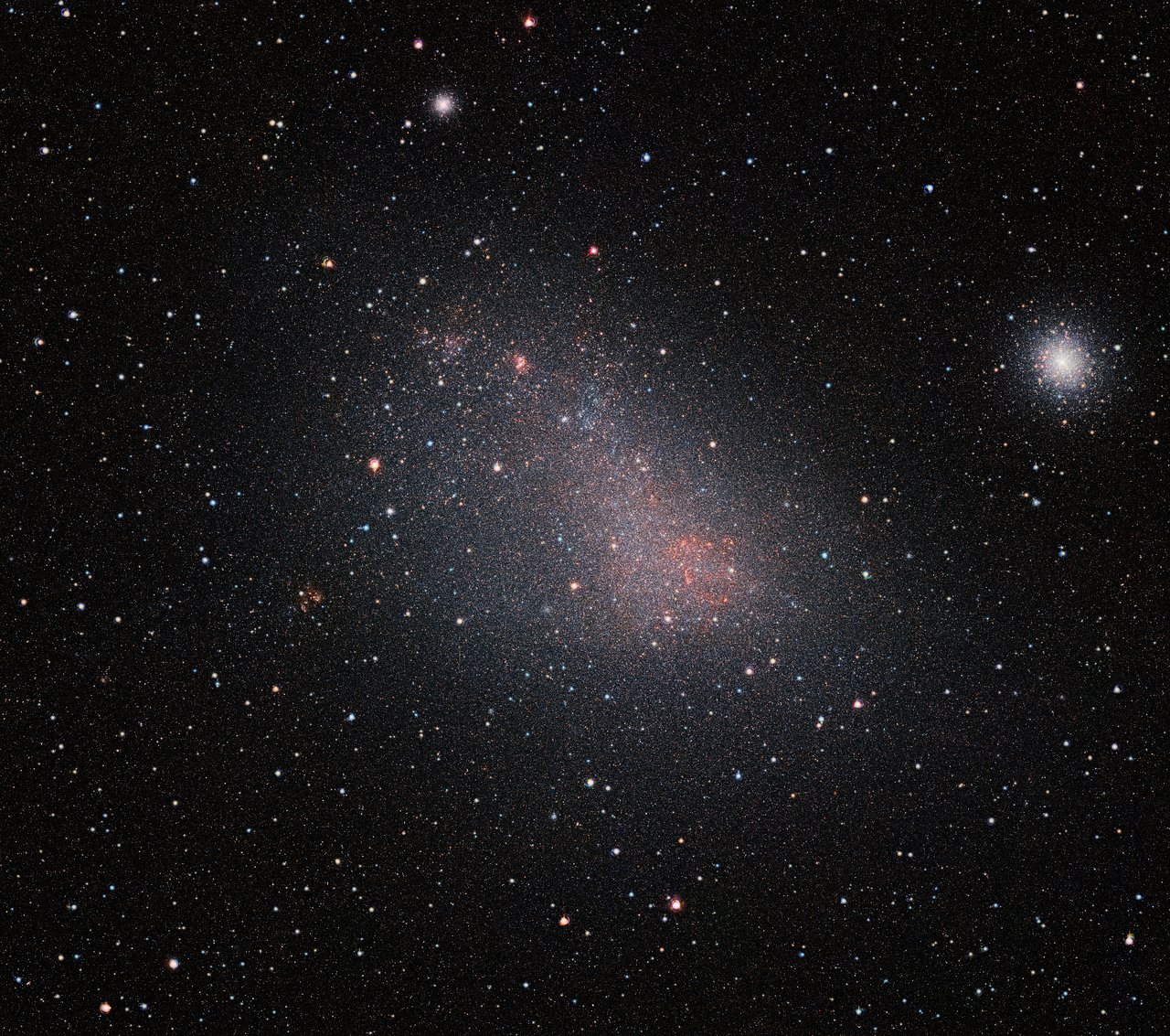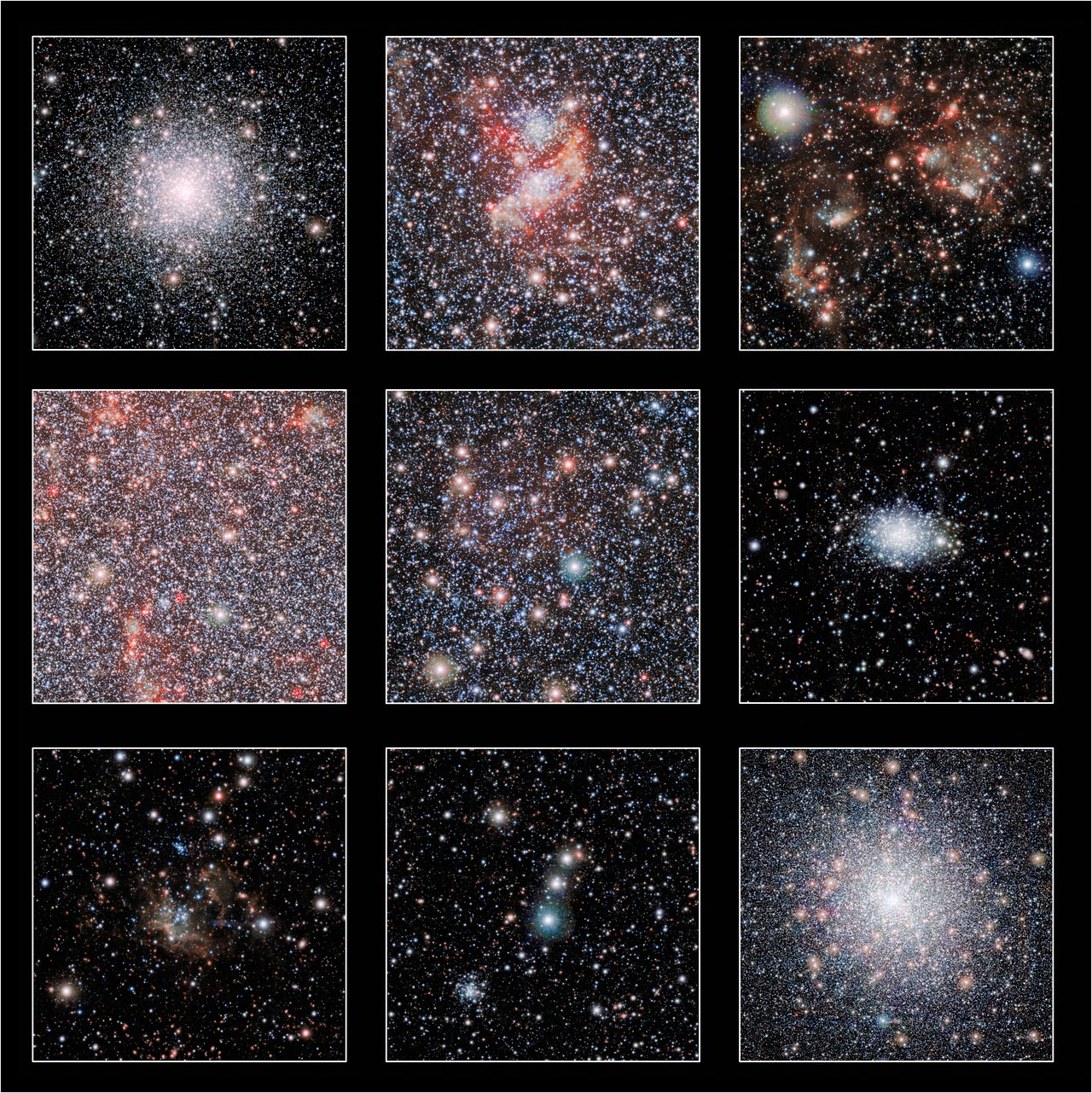Record-Breaking 'Gigapixel' View of a Tiny Galaxy Reveals Secret Lives of Stars
A telescope in Chile captured this incredible view of a nearby dwarf galaxy, which reveals millions of previously hidden stars that you can explore without stepping away from your computer.
As a part of the VISTA survey of the Magellanic Clouds (VMC) project, an international team of astronomers, led by Stefano Rubele of the University of Padova in Italy, has released this jaw-dropping "gigapixel," zoomable image of the SMC here.

"The result is this record-breaking image — the biggest infrared image ever taken of the Small Magellanic Cloud — with the whole frame filled with millions of stars," researchers explained in a statement.
To the naked eye, the Small Magellanic Cloud (SMC) looks like an impressive smudge in southern skies. That smudge, however, is a small galaxy 200,000 light-years away containing millions of stars that — along with its more massive sibling, the Large Magellanic Cloud (LMC) — is stuck in an orbital dance around our Milky Way galaxy. [Amazing Views of Our Milky Way Galaxy]
But despite its proximity, observing the SMC's stars can be difficult as interstellar dust inside the dwarf galaxy scatters and absorbs starlight.. This phenomenon is known as "dust extinction," scientists said.
Now, a powerful telescope has been used to cut through the haze, revealing the most detailed and beautiful portrait of the tiny galaxy ever created.
Using the 4.1-meter Visible and Infrared Survey Telescope (VISTA) at the European Southern Observatory's Paranal Observatory (located in the Chilean Atacama Desert), astronomers can see a wavelength of light that bypasses much of the obscuring effects of interstellar dust clouds. Peering deep into the SMC, VISTA can pick out the infrared light of young stars forming deep inside the clouds, revealing the galaxy’s stellar birth secrets.
Get the Space.com Newsletter
Breaking space news, the latest updates on rocket launches, skywatching events and more!

The image itself is composed of 1.6 billion pixels, creating an unprecedented, high-definition view of millions of stars — many of which have never been seen before. As a bonus, there are also thousands of distant galaxies behind the SMC and a few star clusters — including 47 Tucanae, seen to the right of the image — littering the view.
Detailed infrared surveys of the SMC and LMC aren't just for the pretty pictures, however. By studying these small satellite galaxies right on our galactic doorstep, we gain insights into star formation as well as acquire a 3D view of their structures, the researchers said in a statement.
Using sophisticated stellar models, they have already made an interesting discovery: It turns out that most of the stars in the SMC are younger than the stars found in larger, neighboring galaxies. Further research is needed to explain this, but the VMC is playing a large role in revealing the secret lives of stars that would otherwise be hidden by clouds of dust.
"This early result from the survey is just a taster of the new discoveries still to come, as the survey continues to fill in blind spots in our maps of the Magellanic Clouds," ESO officials wrote in the statement.
Follow Ian O'Neill @astroengine. Follow us @Spacedotcom, Facebook and Google+. Original article on Space.com.
Join our Space Forums to keep talking space on the latest missions, night sky and more! And if you have a news tip, correction or comment, let us know at: community@space.com.
Ian O'Neill is a media relations specialist at NASA's Jet Propulsion Laboratory (JPL) in Southern California. Prior to joining JPL, he served as editor for the Astronomical Society of the Pacific‘s Mercury magazine and Mercury Online and contributed articles to a number of other publications, including Space.com, Space.com, Live Science, HISTORY.com, Scientific American. Ian holds a Ph.D in solar physics and a master's degree in planetary and space physics.









